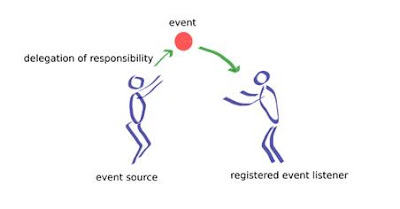Difference in Core Java
Difference in Core Java
|
Method
Overloading
|
Method Overriding
|
|
Overloading occurs when two or more methods in one class have the
same method name but different parameters.
|
Overriding means having two methods with the same method name
and parameters (i.e., method signature). One of the methods is
in the parent class and the other is in the child class.
|
|
It is a compile time polymorphism.
|
It is a run time polymorphism.
|
|
It may or may not need inheritance in
Method Overloading.
|
It always requires inheritance in Method Overriding.
|
|
In Method Overloading, relationship is there between
methods of same class.
|
In Method Overriding, relationship is there between methods
of super class and sub class.
|
|
The static method can be overloaded.
|
The static method cannot be overridden.
|
|
Example:
class Add
{
int sum(int a, int
b)
{
return a + b;
}
int sum(int a)
{
return a + 10;
}
}
|
Example:
class A // Super
Class
{
void display(int
num)
{
}
}
//Class B inherits Class A
class B //Sub Class
{
void display(int num)
{
}
}
|
Abstract Class
|
Interface
|
|
An Abstract Class is always used to serve as a base class as it can’t be instantiated.
|
An Interface is
one type of template having
only signature of methods.
|
|
An Abstract class contains abstract methods and non-abstract (concrete) methods.
|
An Interface contains all
abstract methods i.e. all methods have to be abstract.
|
|
You can define & use any variable in abstract class.
|
An Interface does not allow declaration & use of
variable as interface does not contain fields.
|
|
An abstract class can have a constructor.
|
An interface cannot have a constructor.
|
|
If any class already has a base class, it cannot inherit
abstract class.
|
Though class has a base class, it can implement any number
of interfaces.
|
|
To access an abstract class is fast than interface.
|
Interface is slower in compare to abstract class.
|
|
A class may inherit only one abstract class.
|
A class may inherit several interfaces.
|
Array
|
Vector
|
|
Array is a static, whose size can be fixed.
|
A vector is a dynamic array, whose size can be increased.
|
|
Array is not class. It is a primitive data type
|
A vector is a class.
|
|
In
array elements cannot be deleted and inserted.
|
In
vector elements can be deleted and inserted.
|
|
Array can store only homogeneous values.
|
Vectors can store any type of objects.
|
|
Memory consumption is less in array.
|
Memory consumption is more in vector.
|
|
Array can be one, two or multi-dimensional.
|
Vector is one dimensional.
|
|
APPLET
|
APPLICATION
|
|
It is small program
uses another application program for its execution.
|
An application is
the programs executed on the computer independently.
|
|
Do not use the main
method
|
Uses the main method
for execution
|
|
Cannot run
independently require API's (Ex. Web API).
|
Can run alone but
require JRE.
|
|
Prior installation
is not needed
|
Requires prior
explicit installation on the local computer.
|
|
Applets cannot read
from and write to the files on the local computer.
|
Applications are
capable of performing those operations to the files on the local computer.
|
|
Cannot communicate
with other servers.
|
Communication with
other servers is probably possible.
|
|
Applets cannot
access files residing on the local computer.
|
Can access any data
or file available on the system.
|
|
Requires security
for the system as they are untrusted.
|
No security concerns
are there.
|
|
AWT
|
Swing
|
|
AWT stands for Abstract windows toolkit.
|
Swing is also called as JFC’s (Java Foundation
classes).
|
|
AWT components are called Heavyweight
component.
|
Swings are called light weight component
because swing components sits on the top of AWT components and do the work.
|
|
AWT components require java.awt package.
|
Swing components require javax.swing package.
|
|
AWT components are platform dependent.
|
Swing components are made in purely java and
they are platform independent.
|
|
This feature is not supported in AWT.
|
We can have different look and feel in Swing.
|
|
These feature is not available in AWT.
|
Swing has many advanced features like JTabel,
Jtabbed pane which is not available in AWT. Also. Swing components are called
"lightweight" because they do not require a native OS object to
implement their functionality. JDialog and JFrame are heavyweight, because
they do have a peer. So components like JButton, JTextArea, etc., are
lightweight because they do not have an OS peer.
|
|
With AWT, you have 21 "peers" (one
for each control and one for the dialog itself). A "peer" is a
widget provided by the operating system, such as a button object or an entry
field object.
|
With Swing, you would have only one peer, the
operating system's window object. All of the buttons, entry fields, etc. are
drawn by the Swing package on the drawing surface provided by the window
object. This is the reason that Swing has more code. It has to draw the
button or other control and implement its behavior instead of relying on the
host operating system to perform those functions.
|
|
AWT is a thin layer of code on top of the OS.
|
Swing is much larger. Swing also has very much
richer functionality.
|
|
Using AWT, you have to implement a lot of
things yourself.
|
Swing has them built in.
|


Comments
Post a Comment